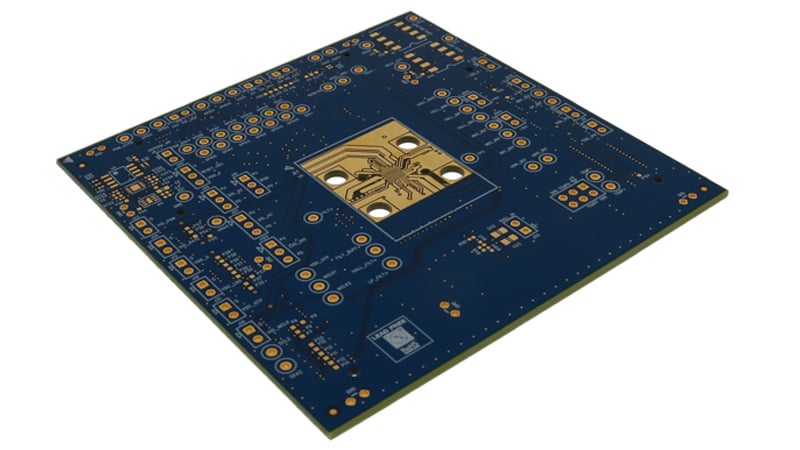I am still amazed at how far technology has brought us throughout the years. When asked about printed circuit boards (PCBs) and what they go into, the answer is everything you can imagine, everything you use in most cases.
The many different technology levels, from back in 1982 when I started in the industry and the PCBs we are making today, you see a vast difference in technology. Most of what we built back then was low technology, single- or double-sided PCBs with very few multilayer circuit boards. Who could have imagined where we would be regarding technology in 2023? Yes, I always think of the Jetsons cartoon series that aired in 1962; Google it if you have no idea what I am talking about. Set in the year 2062, the vision of the creator was spot on. I think we are on pace to exceed the expectations set forth.
In this blog post, we will go over high-frequency PCBs, what they are, what they go into, and what speed has to do with them.
What is a High-Frequency PCB?
First, let us define what a high-frequency printed circuit board is. Simply put, it is a multilayer printed circuit board designed to carry signals from point to point at a specified frequency and speed. The signals are typically impedance controlled and on specific layers throughout the high-performance printed circuit board.

Example of a high-frequency printed circuit board.
PCBs are usually produced on specialty laminate materials such as Rogers, Taconic, Isola, or Arlon to name a few. The board can be rigid, flex, or a combined rigid-flex and come in many different sizes, shapes, and thicknesses.
Material selection, layer stack-up, trace width and spacing, via placement, grounding, and signal integrity analysis are critical factors that should be considered while designing high-frequency PCBs. These PCBs are a type of electronic substrate that is designed to handle high-frequency signals. They are used in a variety of applications such as communication systems, radar systems, and medical equipment. Proper design of these PCBs will result in better signal quality and improved system performance.
Factors to consider when designing high-frequency PCBs include:
- Material Selection
- Layer Stack-up
- Trace Width & Spacing
- Via Placement
- Grounding
- Signal Integrity
Consumer Needs
Consumers have different needs when it comes to high-frequency PCBs, depending on the specific application and industry. However, some common consumer needs when it comes to high-frequency PCBs are:
- High-Frequency Signal Integrity
- Size and Shape
- Reliability
- Cost-Effectiveness
- Customization
Consumers require high-frequency PCBs that are designed to maintain signal integrity and to be compact, reliable, cost-effective, and customizable. Meeting these needs requires careful design and manufacturing of high-frequency PCBs.
These needs, or rather wants, have pushed companies to develop the once unimaginable, including basic items in our everyday lives that we just can’t live without. As soon as we have a new cell phone, we wonder when the next version will be out and when I will have it.
Who doesn’t have a cell phone today? Even grammar school children carry them. Heck, my 10-year-old grandson has a better iPhone than my husband (and yes, that’s my fault. I digress). The point is we all want to stay connected not just to each other but to the weather, the Internet, our favorite sports team, or app, our banks, doctors, and friends, so technology and speed have everything to do with all of it.
Whatever it is, can you imagine life without it or even going backward? Let’s take telecommunications, for example. Items such as radio transmitters, antennas, and satellites are all applications using high speed. We used to have to wait for the news to come on the TV to tell us the weather, right? I have a great example and a true story. We were vacationing in the mountains of New Hampshire, and because of the weather app, we were able to chase the sun and enjoy the time off. It was great! Without our cell service, the weather app, and the Internet, it would have been a pretty miserable time camping. Sure, we had to do some driving, but we knew each day where to find the sun. We adjusted daily where we were going to spend our time, we were also able to monitor and avoid the thunderstorms rolling in.
Speaking of cell service, or lack thereof in some cases, network communications still have much room for improvement. Many areas in our country are still without service. In fact, just 2 miles down the road from me, there is none.
Now, in the provider’s defense, the last three years have been challenging with working from home, home-schooling, and companies doing the same. Imagine if we had not advanced as far as we had. Yes, I remember the home landline well where you had to dial up the person you needed on the rotary phone and the annoying busy signal when someone was chatting, and also the excitement when call waiting arrived. The truth is we now have multi-level calling, conference lines, and applications such as Teams, Zoom, FaceTime, OoVoo, and WeChat, so many options to reach out for communication purposes we have no option but to continue to improve our systems.
When it comes to high-frequency PCBs in relation to consumers, technology plays an important role in helping them with improved performance, increased efficiency, and a compact design that is customizable, reliable, and durable. These benefits enable consumers to reap the benefits of high-frequency technology in a variety of applications.
Types of Products
The automotive industry has been another industry pushing technology. From the simplest standard luxuries, automatic windows, seats, radios, cell phone ports, and navigation, all use high-speed PCBs, not to mention advanced safety and driver’s assistance systems, and engine controls. We have all seen those videos of a person in a self-driving auto asleep behind the wheel; I can’t imagine. The advances in vehicles are ones that continue to demand speed and accuracy; it makes me nervous just thinking about it.
Medical equipment, and not just devices like intravenous pumps, CT scanners, MRIs, and ultrasounds, even the latest and greatest thermometer, blood pressure cuff, home heart monitors, blood sugar levels, and other amazing technological improvements are user-interfacing products with high-speed printed circuitry telling us what we or our doctors instantly want to know.
Aerospace, military, and defense are other users of this advanced technology. The use of systems for communication and protection of our country and others have some of the leading technologies within the product produced. Systems such as satellites, radars, guidance, or electronic warfare and drones, all contain high-speed, high-frequency, and intelligent capabilities that start with a printed circuit board.
Summary
High-frequency PCBs are an important component in the design of high-frequency electronic systems. They require careful design considerations to achieve optimal performance.
When you think about it, with the advancements continuously being made, we now cannot live without these changes. Gone are the days of crank windows, landlines, AM-FM dials, ice trays, and a lot of supporting domestic industry. Consumers, corporations, and our government do not want to go in reverse with their gadgets and gaming systems, and medical equipment, so they continue to push manufacturing limits.
Whatever technology touches your daily lives, whether it’s medical, automotive, telecommunications, or gaming systems, we are always looking to improve what we have. Bigger, better, faster than ever, from upload to download, the speed at work or at play, we also have no patience and want it now. Knowing your supplier and using their guidance to assist you with the design and layout of your PCB and building your quality product on specialty materials is key to preventing the possibility of failure.
Key Takeaways
- High-frequency PCBs are essential for modern electronics: They use specialty laminates like Rogers, Taconic, Isola, or Arlon to support fast signal transmission, impedance control, and signal integrity across rigid, flex, and rigid-flex designs.
- Design factors directly impact performance: Material selection, layer stack-up, trace width, via placement, and grounding must be carefully engineered to ensure signal quality and reliability at high speeds.
- Consumer demand drives innovation: From smartphones and communication systems to gaming devices, consumers expect compact, reliable, and customizable products that depend on high-frequency PCB performance.
- Applications span multiple industries: High-frequency PCBs are critical in telecommunications (cell networks, satellites, antennas), automotive systems (driver assistance, navigation, EVs), medical devices (MRIs, CT scanners, monitors), and aerospace/defense (radar, guidance, drones).
- Continuous advancement is required: As technology becomes faster and more integrated into daily life, manufacturers must push design limits and partner with experienced PCB suppliers to meet growing performance, reliability, and regulatory demands.
















